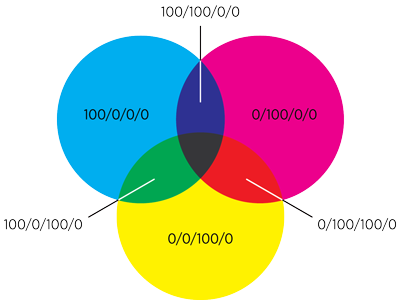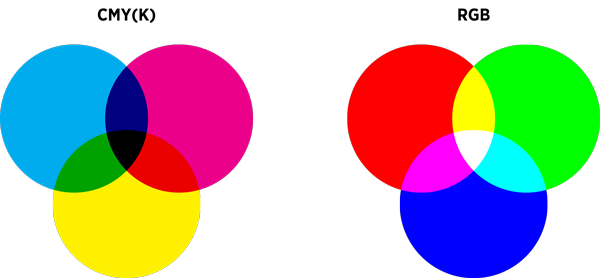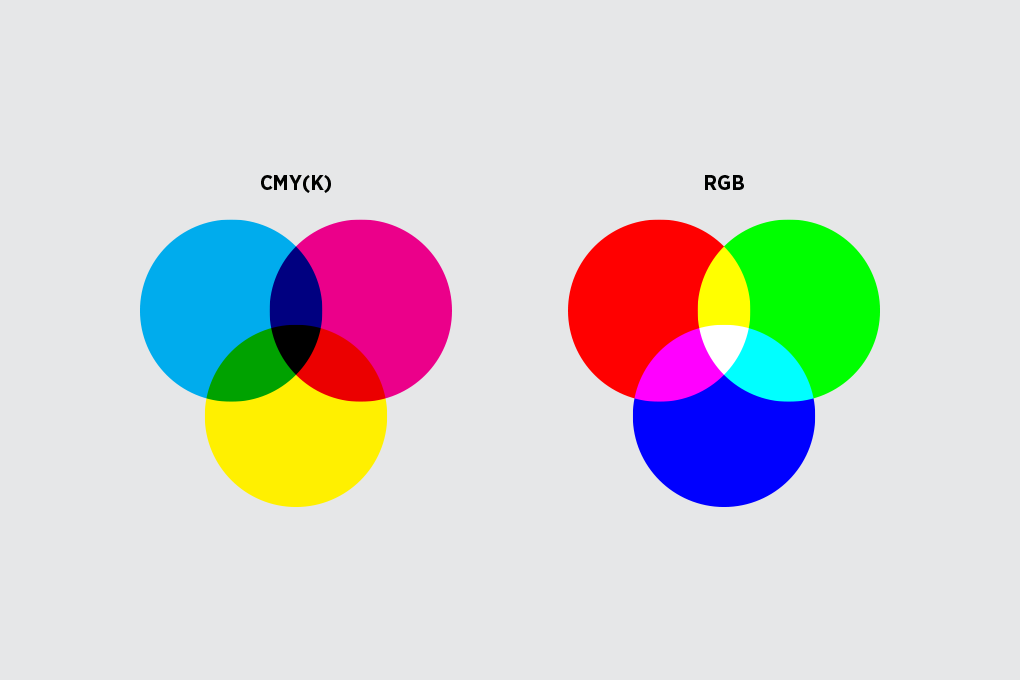CMYK or RGB: What’s the difference?
What is CMYK?
Printed material is everywhere; adverts, magazines, flyers, books, DVD covers, letters – they all use (mostly) the CMYK colour model. CMYK is short for Cyan, Magenta, Yellow, and Key (which represents black).
These are the main four inks that make up the millions of colours used in print.

The colours are often described as four numbers between 0 and 100%, in this exact order – Cyan first, then Magenta, then Yellow, then Black: C/M/Y/K.
In the example below, no black is used, so the ‘K’ (4th) value is always zero. The overlapping areas show how the colours mix – it’s pretty much like mixing paint in school!
Using this ‘overlapping’ technique, millions of colours can be represented in print.

Cyan has a C/M/Y/K value of 100/0/0/0 (100% Cyan and 0% of the other three colours). Same with Magenta, but it’s the second value, so it has a C/M/Y/K value of 0/100/0/0.
Where the colours mix, the values are combined – imagine the circles as coloured sheets of transparent plastic that are overlapped on top of each other.
So for red, which is made up of magenta and yellow, the C/M/Y/K value is 0/100/100/0 – 0% Cyan, 100% Magenta, 100% Yellow and 0% Black. You can apply the same principle to purple, green, and any other colour.
CMYK versus RGB
You may have come across the term RGB. RGB stands for Red, Green, Blue and is a screen representation of colour. It represents light rather than ink, and is never used in print. RGB colours are much brighter overall and they mix very differently to CMYK colours:

As the example shows, Red and Green produce yellow – which is not what you may expect. RGB values range from 0 to 255, where black is R/G/B value 0/0/0 and white is represented as 255/255/255.
See the centre of the RGB circles? That’s where all the light mixes (and they are at full value), and the result is white. Where there is no light, it is black. Quite the opposite of mixing ink!
So how do I know if an image is CMYK or RGB?
You’d have to open it in photo editing software such as Photoshop, and it will tell you under ‘Colour Mode’ or similar. If you don’t have Photoshop, there is default software on Mac as well as PC that will allow simple alterations or saving pictures as a different format or size.
As a rule, if you are going to use an image for printing, save it as CMYK. If you plan to use it on the web, save it as RGB. If you are using it for both, save two separate versions; one for each purpose. If you are working with a designer, they should know what to do. So, in a nutshell:
[table id=3 /]
InDesign Tip: If you click on an image in the ‘Links’ panel, the ‘Colour Space’ entry in the Link Info will tell you whether it is CMYK or RGB.



